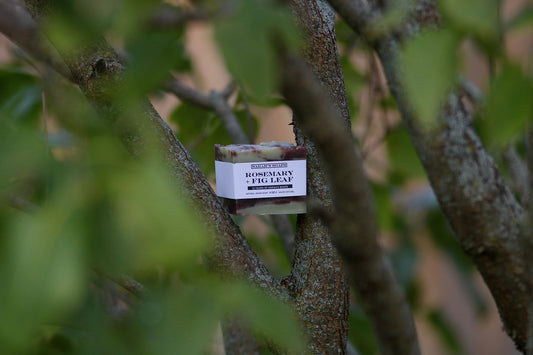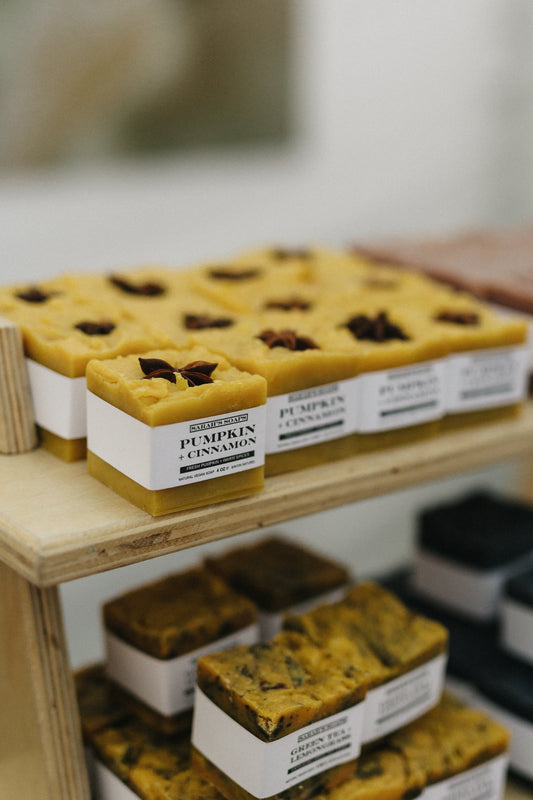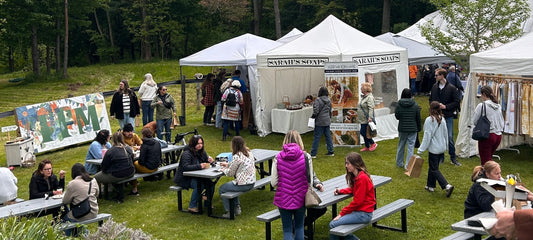Here at the SS studio, we live in Southern Ontario, in zone 7a. In our region, we are fortunate enough to be able to grow a wide variety of beautiful native trees, perennials, shrubs + botanicals, all while bringing not only interest to any garden, but food + medicine too! Planting not only for looks, but for purpose is one way we can make our gardening efforts that much more sustainable.
Before planting, you must figure out what hardiness zone you live. A hardiness zone is a geographical grouping of climate conditions that give you information regarding what plants will grow in your area. Even though some plants have a wide geographical range of where they are native to, it is always best to double check your hardiness zone to bring you the best success during your growing season. If you are in Canada you can find information about hardiness zones here. If you are in the USA, you can find information here.
Before planting, double check that these plants are truly native to your area. Native pollinators + creatures thrive on native food sources, so you want to be sure that you are providing them with the proper plants. With a little research, you can find out which plants here are native to your area, as well as native alternatives.
Once you have figured out your hardiness zone, I recommend joining online Gardening clubs in your area - many times people are willing to trade seeds and share plants. You can purchase plants online + locally, some of my favourite places to purchase native plants are:
ONLINE - Ontario Native Plants
NIAGARA REGION - Niagara Nurseries, Vermeer's Garden Center, Rice Road Greenhouses
Although not an exhaustive list + there are so many more that we can include, here are my top 8 favourite native plants that I recommend you plant in your garden this spring season!
Spotted Bee Balm - Monarda punctata
If you are looking to add some height + colour, look no further than the humble Spotted Bee Balm. This member of the mint family has beautiful spotted yellow tubular flowers with pink/purple bracts that are a show all season long. I personally have this plant in my garden and it is adored by so many bees + insects. An easy to care for perennial that brings so much to any garden space!
PART SHADE to FULL SUN
• SUMMER/FALL BLOOMS
• DRY to MEDIUM SOIL MOISTURE
• ATTRACTS POLLINATORS
• MEDICINAL PROPERTIES
Cardinal Flower - Lobelia cardinalis
Tall red flower stalks soar high above the garden reaching 3-4ft at maturity. These vibrant tubular flowers attract bees butterflies and birds - like the Ruby Throated Hummingbird seen having a little snack of nectar here! It does like to grow in damp to wet soil, making this perennial perfect for rain gardens + damp areas.
PART SHADE to FULL SUN • SUMMER BLOOMS • MEDIUM to WET SOIL MOISTURE • ATTRACTS POLLINATORS • MEDICINAL PROPERTIES
Black Eyed Susan - Rudbeckia hirta
Black Eyed Susans provide a sunny punch of colour that lasts from summer to fall, even providing food, shelter + interest during the winter months to birds and pollinators. This easy to care for perennial grows back every year + self seeds quite easily, making it the perfect pick for wild spaces + cottage gardens.
PART SHADE to FULL SUN • SUMMER/FALL BLOOMS • DRY to MEDIUM SOIL MOISTURE • ATTRACTS POLLINATORS • MEDICINAL PROPERTIES
Wild Strawberry - Fragaria virginiana
Wild Strawberry makes a unique + functional ground cover, with beautiful greenery, tiny blooms + delicious sweet fruit. I recommend planting in a raised garden bed, container or large area as this plant spreads by runners and pops up new plants. Produces tiny, tasty berries that are perfect for eating fresh or making jams, sauces + baked goods with. Strawberry leaves make a delicious tea + of course this plant provides food to so many creatures, bonus!
PART SHADE to FULL SUN • SUMMER BLOOMS • MEDIUM SOIL MOISTURE • ATTRACTS POLLINATORS • MEDICINAL + EDIBLE
Eastern Prickly Pear - Opuntia humifusa
Also known as Opuntia cespitosa, this endangered native perennial cactus is truly a showstopper - large buttery yellow blooms that can produce edible fruit once established. The Eastern Prickly Pear cactus grows spine covered pads, bringing a unique tropical vibe to any garden space. These magnificent plants overwinter under the snow + pop right back up in the spring and summer months. Truly one of my favourite natives!
Read more on the Eastern Prickly Pear conservation efforts HERE.
FULL SUN • SUMMER BLOOMS • DRY SOIL MOISTURE • ATTRACTS POLLINATORS • EDIBLE
Elderberry - Sambucus canadensis
If you are looking to make a statement in the garden, look no further than the humble Elderberry bush! This native shrub can grow up to 10ft in height once mature, but can be pruned to keep a smaller shape. Elderberry produce elegant white bloom umbels + delicious berry clusters. In the fall, the leaves turn a striking golden yellow. The perfect garden addition to provide food, shelter + habitat to so many native pollinators and animals. The berries are edible once ripe, and can be used to make jams, jellies, sauces + elderberry syrup. Great for at-home medicine making!
PART SHADE to FULL SUN • SUMMER BLOOMS • MEDIUM to WET SOIL MOISTURE • ATTRACTS POLLINATORS • EDIBLE + MEDICINAL
Milkweed - Asclepias sp.
We couldn't share our favourite natives without sharing Milkweed! Ontario has a few native varieties, some being Swamp Milkweed (Asclepias incarnata), Common Milkweed (Asclepias syriaca) and Butterfly Milkweed (Asclepias tuberosa). Milkweed hosts and feeds Monarch butterfly eggs + larvae and they are essential to the survival of this beautiful butterfly species. All species produce dense, colourful flower clusters in shades of pink, purples, yellows + oranges.
FULL SUN • SUMMER BLOOMS • DRY SOIL MOISTURE • ATTRACTS POLLINATORS • EDIBLE
Trillium - Trillium sp.
There are 5 native Trillium species in Ontario - each grown with a unique 3-petaled bloom and a whorl of 3 leaves on its stem, blooming in white + reds. There are 5 species of Trillium native to Ontario - the white Trillium is Ontario's provincial flower. These beautiful plants are spring ephemerals, only blooming for a short period of time in spring + going dormant afterwards. Once established, Trilliums will begin forming dense, low clusters in the garden. We recommend plating Trillium in the late summer/fall, whenever you plant your spring blooming bulbs.
PART SHADE • SPRING BLOOMS • MEDIUM SOIL MOISTURE • ATTRACTS POLLINATORS
What will you be planting in your garden this spring? I hope you will look at native options in your area to support your local ecosystems. Before you know it, you will see a wide variety of native pollinators, birds, bees + insects grace your garden. Feel free to leave a comment below sharing what you hope to plant this year!









